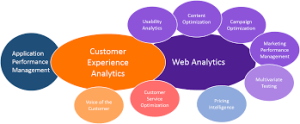What is Digital Experience Analytics Platform: Choose 5 Best

Digital customer experience analytics
Digital customer experience analytics refers to the practice of collecting and analyzing data to understand and optimize the digital experiences of customers. It involves tracking and analyzing customer interactions, behaviors, preferences, and feedback across digital channels such as websites, mobile apps, social media platforms, and more.
Digital customer experience analytics can provide valuable insights into how customers engage with digital touchpoints, their satisfaction levels, pain points, and opportunities for improvement. By leveraging data analytics techniques and tools, businesses can gain a deeper understanding of customer behavior and preferences, identify patterns and trends, and make data-driven decisions to enhance the digital customer experience.
Key components of digital customer experience analytics may include:
1. Data Collection: Gathering data from various sources such as website analytics, app usage data, customer feedback surveys, social media interactions, and customer support interactions.
2. Data Analysis: Analyzing and interpreting the collected data to uncover insights and trends related to customer behavior, preferences, and satisfaction levels.
3. Customer Journey Mapping: mapping out the customer journey across digital touchpoints to understand the end-to-end experience and identify areas for improvement.
4. Personalization and Segmentation: Utilizing customer data to create personalized experiences and segment customers based on their preferences and behaviors.
5. Performance Metrics: Tracking and measuring key performance metrics such as conversion rates, engagement metrics, customer satisfaction scores, and Net Promoter Score (NPS).
6. Experimentation and Optimization: Conducting experiments and A/B testing to optimize digital experiences and validate hypotheses to improve customer satisfaction and engagement.
The best digital experience analytics tools
1. Userpilot:
FAQs:






